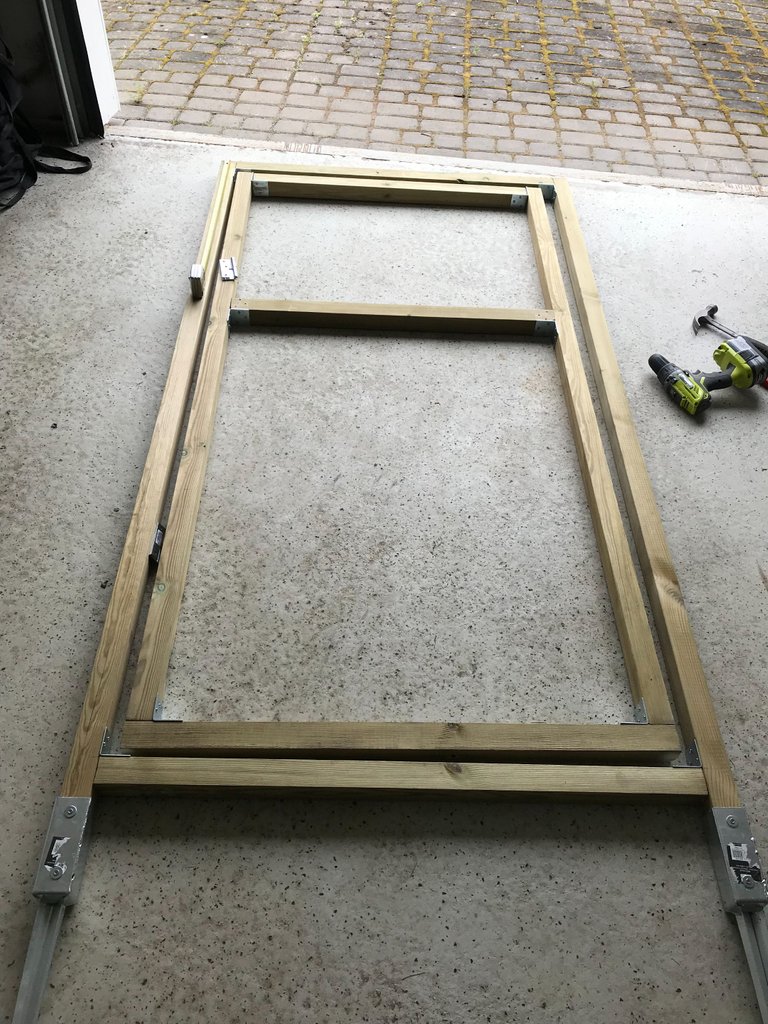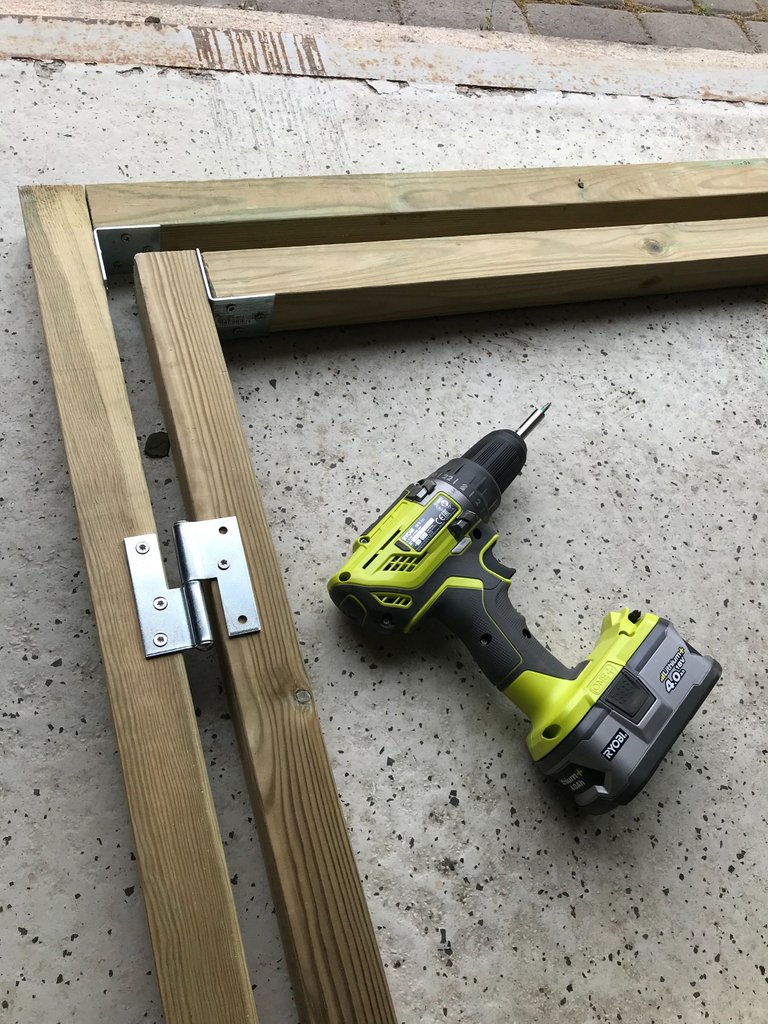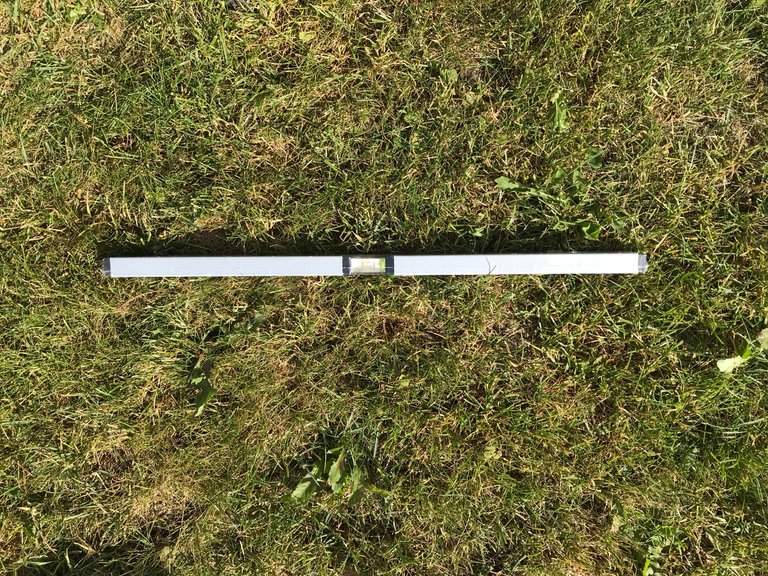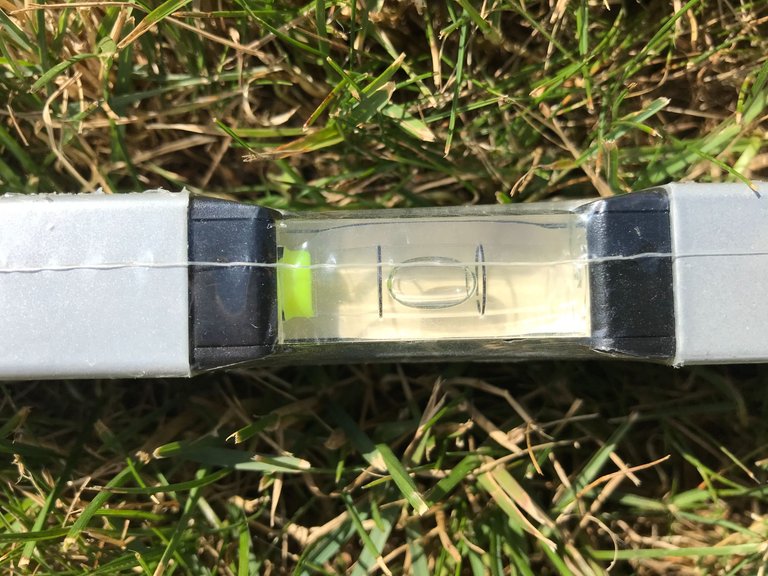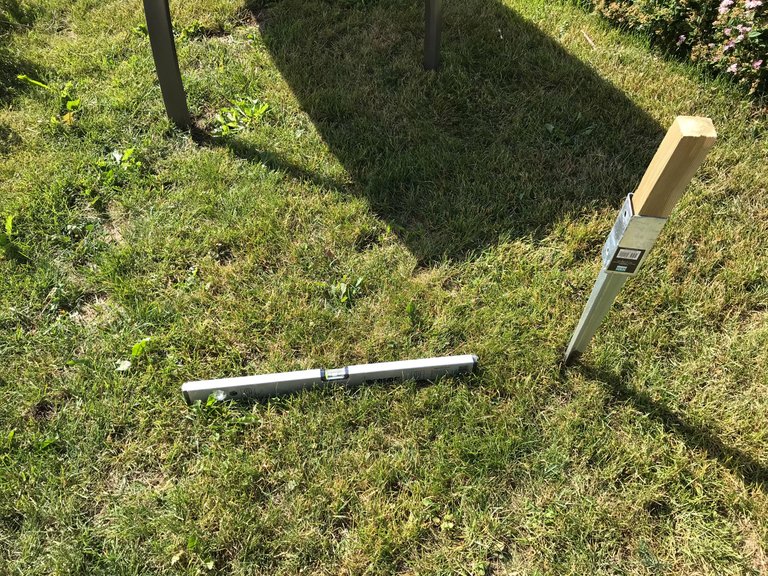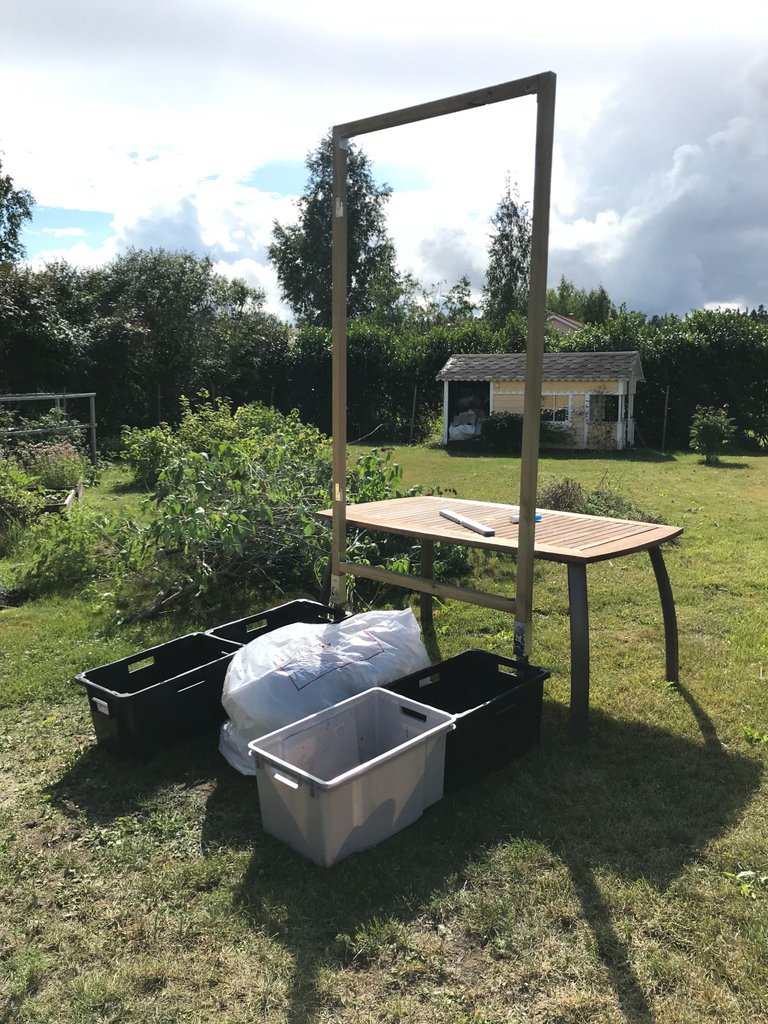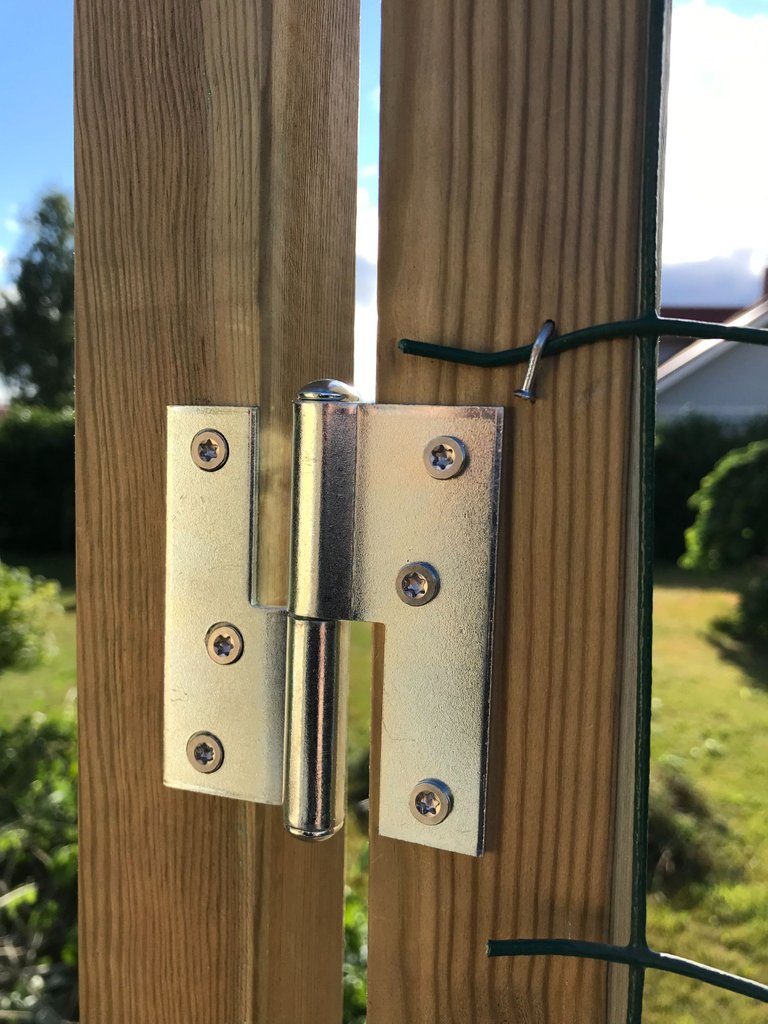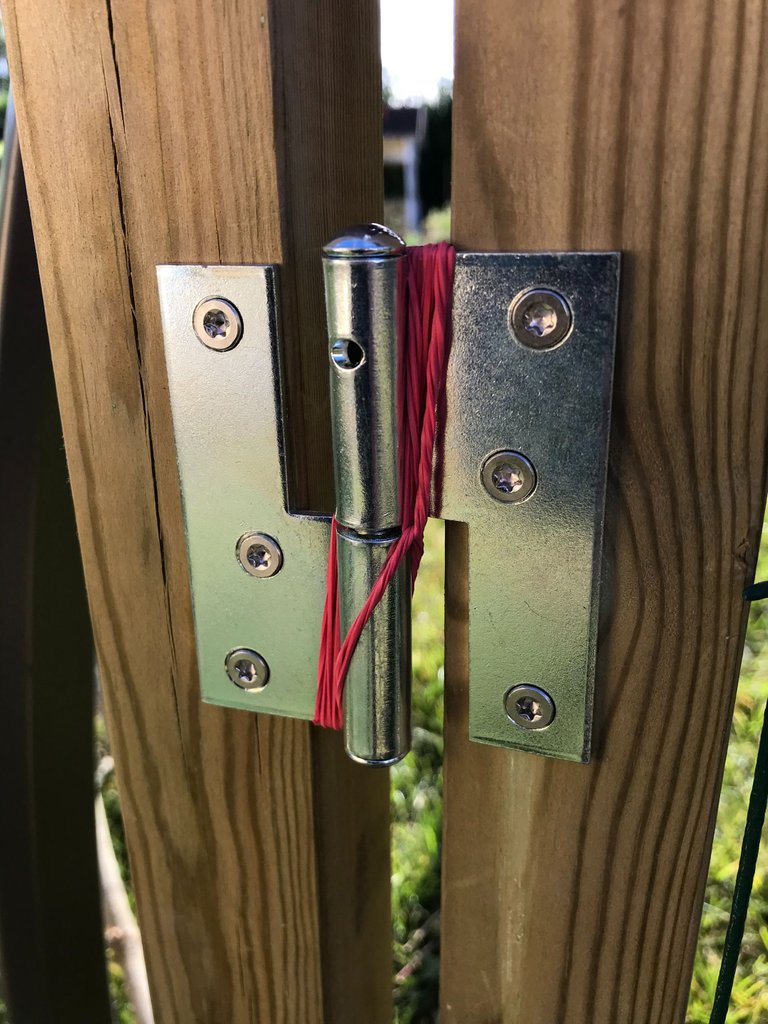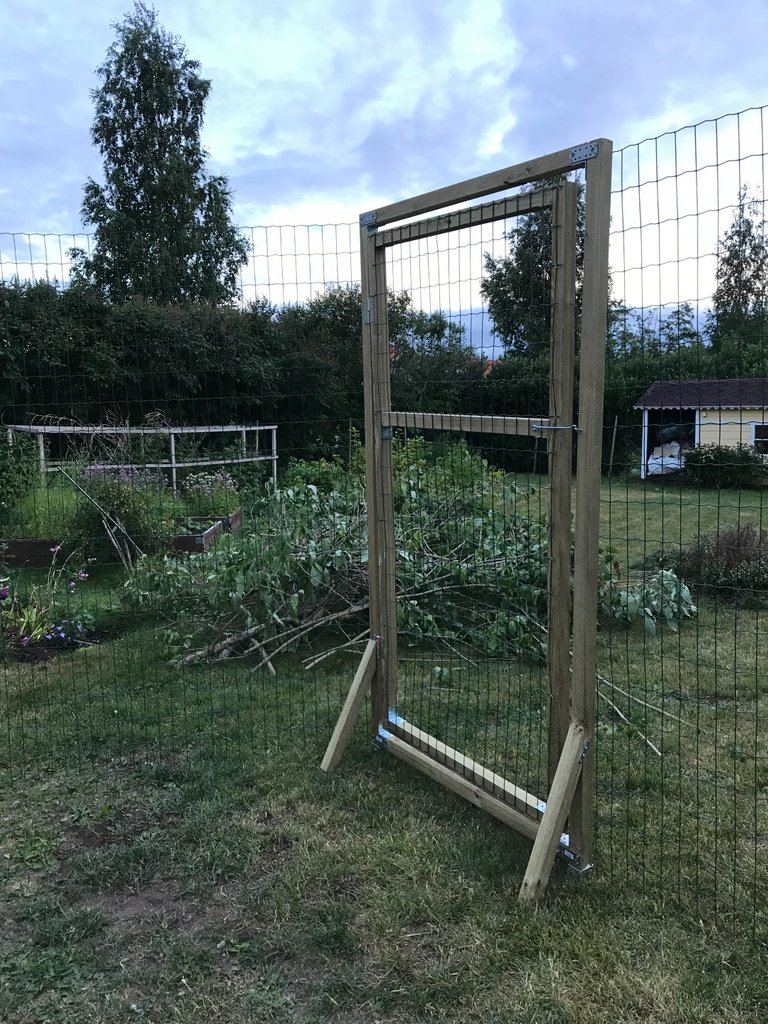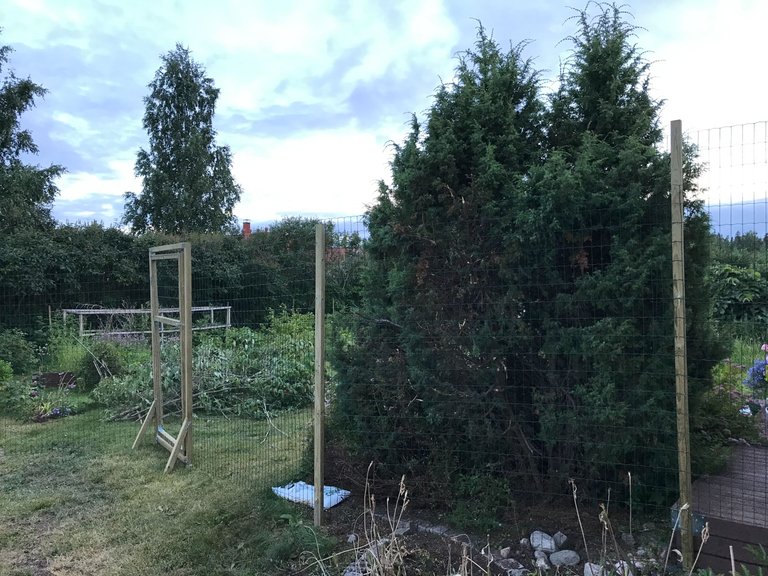I decided to finish the project today. I was successful. The only things that need to be done is clear the yard of the branches of a syringa that were in the way behind the garage and parts of a bush and a thuja that needed to be removed.
This project did not really begin this week. The first preparations were made last August when I moved about a few hundred kilograms of sand and soil from a one corner of the yard. In March, I felled a couple of apple trees that no longer produced good apples and that were in the way.
When I made the gate yesterday, I made some mistakes when I was tired that had to be corrected.
This is the gate without the hinges being attached and the net being installed. The biggest problem with putting the gate in place is that controlling the direction in which the pole anchors sink into the ground is impossible to do with too much precision.
It's a good thing the precision required is much less than in case of a door. There are so many variables to control here. I'm completely inexperienced and I don't have most of the tools and mastery of techniques a real carpenter would have.
Finding a level spot is important.
I measured the distance between the pole anchors and prepared to drive them into the ground.
An explanation may be needed. I placed the table to keep the frame of the gate from falling forward. Those boxes are there to keep it from falling backward. I brought two bags of soil (not in the picture) to keep them more firmly in place. Each of the white plastic bags contains a car tire. A stack of two is stable enough for me to stand on and use the sledge hammer.
The gate itself came off its hinges when I carried the whole thing out of the garage. I figured I'd put it back on after the frame was firmly in place.
It turned out putting a door with two hinges in place without help (I've had no help whatsoever during this project) is fiendishly difficult.
But there is always a method to work around any difficulty.
This is the lower hinge. The purpose of those rubber bands is to guide the peg where it belongs while I'm focusing on the upper one. This method worked like a charm. The second or the third time worked. Without the rubber band, it felt completely hopeless.
Everything is in place and in working order. But that lock is not very good. The part that goes into the ring should be longer. Perhaps I'll find a tight piece of rubber hose to pull over it to make it longer. In fact, I'll be visiting my parents tomorrow to help them out by clearing pine needles from the roof of their house. Where they live, there is a shop that sells precisely the kind of rubber products that fit the bill. I bought something from the shop about 15 years ago. I hadn't finished explaining what I needed when the assistant who was extremely taciturn like in sketches about hardware store clerks handed me the exact product I needed without saying a word.
I'm going to add a bolt lock to the inside anyway. I imagine the most common use case is one where one exits the yard briefly to fetch something. To keep the door securely shut when it is supposed to be locked a better lock is needed. It looks too easy for an intelligent animal to open that lock.
Speaking of animals, one of the reasons for me to build this fence was to keep rabbits, foxes and deer out of the yard. Deer ate the tulips growing in one of our neighbors' yard and one must have eaten most branches of our raspberry bushes.
I had to trim that thuja on the right. The problem is that the roof of the house has no snow guards right there. When hundreds of kilograms of dense snow fall, the fence could break down.
I have an idea as to how to deal with that. If next winter looks very snowy, I could cut the section of the fence where the thuja grows into two halves (except for the bottom) and reattach them with something much weaker like chicken wire. Hopefully no significant force from the falling snow would impact the poles and the rest of the fence. After the snow has melted, I'd just repair the fence by reattaching the sides of the fence.
Installing snow guards would be the best idea but when I called a roofing contractor last spring, they said the project would be too small for them to consider. Market conditions had changed. I may thus have to deal with the problem creatively.
